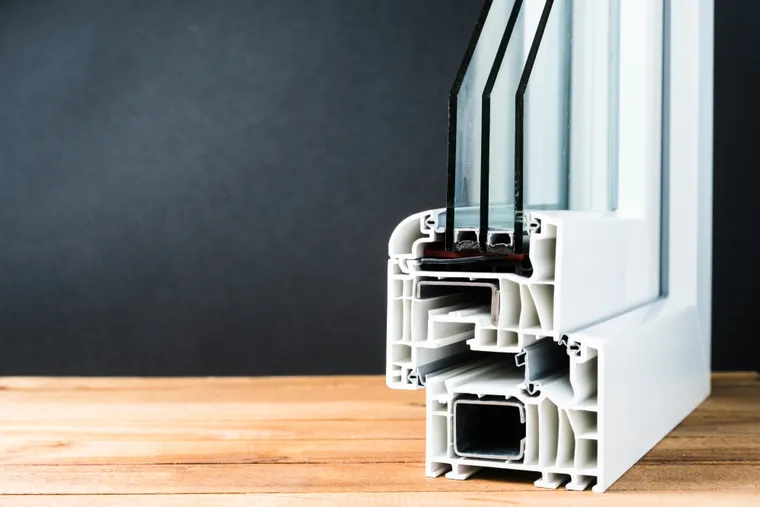Windows, doors, and skylights play an important role in your home's energy efficiency. They affect heat gain, heat loss, and natural light, collectively contributing to approximately 25%–30% of residential heating and cooling energy use. By understanding energy performance and using proper installation techniques, you can improve efficiency, increase comfort, and lower energy costs.
For real estate agents, stay ahead in your career with our expert-approved Real Estate Continuing Education tips and insights, designed to complement any of our Real Estate CE programs or License Renewal Courses we offer in 25+ states.
Energy Efficiency in Windows
Energy-efficient windows are fundamental to sustainable design. They reduce energy waste, improve indoor comfort, and provide significant cost savings. Window efficiency can involve either updating existing windows or replacing them entirely.
For existing windows, sealing air leaks with caulking and weatherstripping can prevent drafts and improve insulation.
Installing storm windows or panels provides an additional barrier to heat transfer while adding window coverings such as shades, blinds, or curtains can further reduce heat loss or gain.

Applying solar control film minimizes heat gain while maintaining visibility, and using exterior shading options like awnings, overhangs, or exterior blinds can block solar radiation before it reaches the window.
When replacing windows, look for ENERGY STAR® products. Choose windows with features such as insulated vinyl, fiberglass, or composite frames for better thermal performance.
Consider glazing options like low-emissivity (low-e) coatings and multiple panes to improve insulation. Gas fills, such as argon or krypton between panes, improve resistance to heat transfer, while operation types like awning or casement windows provide tighter seals compared to sliders or double-hung styles.
Performance Ratings
The National Fenestration Rating Council (NFRC) provides standardized labels to evaluate window efficiency. Important metrics include the U-factor, which measures heat transfer—lower U-factors indicate better insulation and are ideal for colder climates.
The Solar Heat Gain Coefficient (SHGC) rates how much solar radiation is transmitted, with lower values being optimal for warm climates.
The Visible Transmittance (VT) indicates how much natural light passes through the window, with higher values being desirable for daylighting.
Energy-Efficient Doors
Exterior doors significantly influence energy use due to air leakage and conduction. Choosing the right type of door and maintaining it properly can improve your home’s energy efficiency.
Insulated steel and fiberglass doors are excellent choices as they often feature polyurethane foam cores, offering higher R-values (R-5 to R-6) compared to traditional wood doors.

These doors also use magnetic weatherstripping to create a tight seal, reducing air leakage. For glass doors, opt for multi-pane designs with low-e coatings or low-conductivity gases between panes to minimize heat loss. Sliding glass doors generally have higher air leakage than swinging models, so choose designs with thermal breaks and improved seals.
Adding a storm door can further enhance insulation, particularly for older doors. High-quality storm doors include low-e glass or foam insulation for maximum performance.
Design Features
Window frames play a critical role in insulation and durability. Vinyl frames are low maintenance and offer good thermal performance, while fiberglass frames are strong and insulative, often with cavities that can be filled for extra efficiency. Composite frames combine the stability of wood with enhanced moisture resistance, whereas wood frames provide excellent insulation but require regular upkeep. Metal frames are durable but poor insulators unless equipped with a thermal break.
Glazing options such as insulated glazing with double or triple panes effectively reduce heat transfer. Low-e coatings reflect heat while allowing natural light to pass through, and spectrally selective coatings block infrared radiation while transmitting visible light. Using gas fills like argon or krypton between panes improves insulation, and warm-edge spacers reduce heat transfer at the edges of windows.
Proper Installation
Even the best windows and doors won’t deliver their full benefits without proper installation. Hiring professional installers can mean that seals are tight and components function as intended. Use caulking and weatherstripping to seal gaps and minimize air leakage, and always follow manufacturer instructions to avoid warranty issues and ensure long-term performance.
For real estate agents, whether you’re updating your knowledge through a Real Estate Course like this one or preparing for your next license renewal, these energy-efficient strategies will add value to your expertise.
To Learn More...
For real estate professionals, understanding these concepts can be particularly valuable during discussions with clients about energy efficiency and property improvements.
If you’re preparing for your Real Estate Continuing Education or looking to enhance your knowledge through a Real Estate Course, topics like insulation and energy efficiency can help set you apart.

As part of your License Renewal Course or other Real Estate CE efforts, staying informed on foundational property concepts can make a big difference in your expertise and client relationships.

